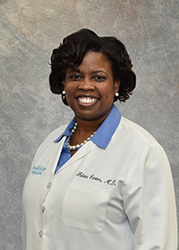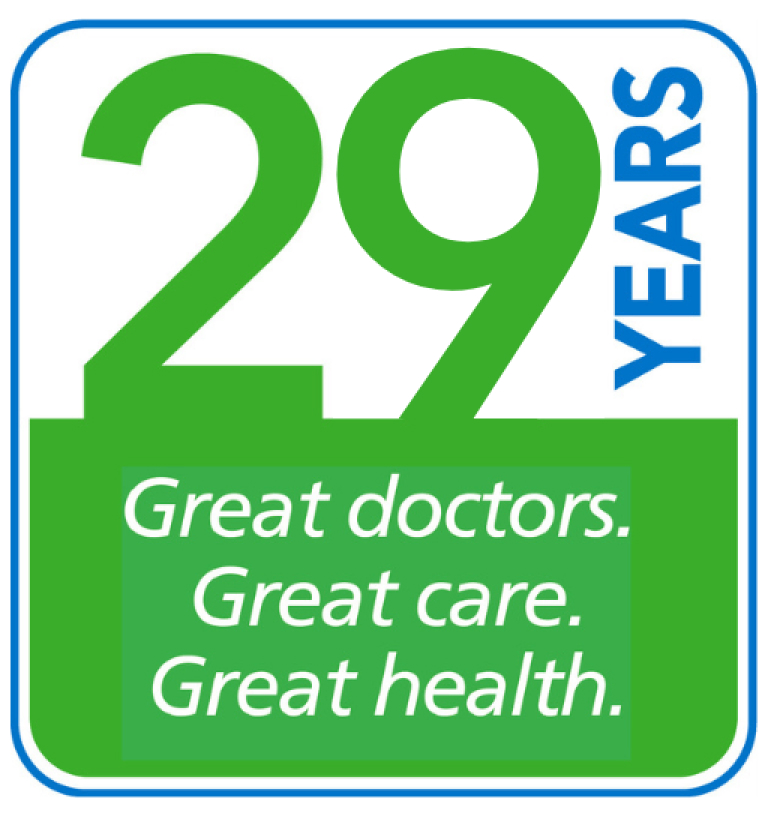Category Archives: Health & Wellness
Move Over Lyme Disease, Here Comes Babesiosis
By: TIMOTHY KLEPPER, M.D.
Tick season is here, and we’re hearing the usual warnings about Lyme disease. But due to a mild winter and spreading tick population, there’s a new threat to watch out for: babesiosis (bah-bee-see-oh-sis).
Both Lyme disease and babesiosis are parasitic diseases carried by deer ticks, also called black-legged ticks. The CDC reports a significant increase in reported cases of both this year in the eastern U.S.
Lyme disease and babesiosis differ in their symptoms and health risks. Here’s a side-by-side comparison of the two, and what you need to look out for.
| Babesiosis | Lyme disease | |
| Likelihood of infection | Low, especially if tick is attached for less than 36 hours | Low, especially if tick is attached for less than 36 hours |
| How soon symptoms start | 1-4 weeks after tick bite | 3-30 days after tick bite |
| Symptoms | Mild to severe flu-like symptoms: fever, chills, sweating, loss of appetite, nausea, tiredness
In severe infections: yellowish skin or eyes, pale skin, dark urine, shortness of breath, nausea and vomiting, abdominal pain, neck stiffness, sudden mood changes |
Circular bulls-eye rash around the tick bite
Early infection: flu-like symptoms: tiredness, muscle pain, joint pain, headaches, fever, chills |
| Risks | Can be life-threatening, especially if you have a weak immune system or don’t have a working spleen. May cause anemia, enlarged spleen, fluid buildup in your lungs, blood clotting problems, kidney or liver failure | Late infection: neck stiffness, pain and swelling in your joints, numbness or pain in your limbs, memory problems, difficulty concentrating, heart problems. Usually not life-threatening |
| When you should see a doctor | If you were bitten by a tick and have flu-like symptoms, especially if you have a weak immune system | If you were bitten by a tick and have an expanding red rash around the bite or have flu-like symptoms |
| Usual treatment | Combination of anti-parasitics and antibiotics Antibiotics | Antibiotics |
How to prevent tick bites
The best way to avoid getting sick with babesiosis and Lyme disease is to not get bitten. Remember the ABCs of prevention:
“A” stands for avoid. You want to avoid areas ticks are found, such as where there are low bushes, leaf litter and tall grass.
“B” stands for bug spray. Use it when you’re outdoors and think you’re going to be exposed to tick bites. The CDC recommends a bug spray that contains either DEET 30% or picaridin. You also could use a spray that has oil of lemon eucalyptus in it.
“C” stands for cover up. Wear protective clothing. If you have clothing over your skin, ticks won’t be able to bite you.
What to do if you’re bitten by a tick
Use tweezers to grasp the tick as close to your skin as possible, then pull the tick off with steady pressure. Then wash your hands and the area of the bite with soap and water. Sometimes, the mouthparts of the tick will break off and stay in the skin. If you can remove them easily, use the tweezers to pull them out. If you can’t remove them easily, just let the skin heal. Your body will break down the remaining mouth parts over time.
Remember, your chances of getting a tick disease are much lower if you remove the tick within 36 hours of being bitten.
 Dr. Klepper is a Maryland Primary Care Physicians, LLC partner and is certified by the American Board of Family Medicine. He cares for patients in the Queenstown office.
Dr. Klepper is a Maryland Primary Care Physicians, LLC partner and is certified by the American Board of Family Medicine. He cares for patients in the Queenstown office.
Where Are We Now With COVID-19?
By: FALANA CARTER, M.D., CO-MEDICAL DIRECTOR
August 2023
Three years after the start of the COVID-19 pandemic, daily information about the disease has receded from public view. Infection rates and deaths are down, emergency measures have ended, and people’s lives have returned to some level of normalcy.
Does that mean COVID-19 is gone?
No, daily infections still occur but the disease has changed since 2020. Mutations of the virus combined with effective vaccinations and natural immunity have reduced the illness burden and death rates.
Like many viruses, COVID-19 continues to mutate and create new strains. In the future, emerging strains could remain relatively mild or cause a serious illness. Currently, the medical community is tracking the variances and learning more about the complexity of the virus, but no clear end of infections is known.
COVID-19 has changed from a pandemic that spreads quickly and endangers large populations in a country or the world to an endemic condition. This means COVID continues to circulate within an area or community. Today, COVID -19 is currently circulating at lower levels, following the pathway to potentially become a seasonal infection flaring more in the fall and winter.
COVID-19 is still a threat
It’s important to remember that though the pandemic has receded, people still get infected with COVID-19, and 50-100 people are dying daily in the US. Those with underlying health conditions – such as obesity, diabetes, asthma or chronic lung disease, sickle cell disease or decreased immunity, and those over 65 years old — can have serious complications and become dangerously ill if infected. We should all be mindful that interactions with those who have high risk for serious complications should be limited if you have any respiratory symptoms.
As many as 16 million Americans are affected by Long COVID. Those patients with Long COVID continue to experience symptoms long after the infection ends, such as fatigue, shortness of breath, cough, headache, and difficulty thinking or concentrating. Researchers continue to explore the underlying cause of Long COVID, but we do know those who are not vaccinated have higher risk for lingering symptoms.
Where we go from here
In just three years, SARS-CoV-2 started as a limited virus overseas and developed into a major respiratory illness that affected the entire world. Increased knowledge of COVID-19 has allowed medical technology to develop various treatments that include: effective vaccines, oral medications and IV infusions that decrease serious complications. As a result of increased community immunity, treatment options and less potent mutations, COVID-19 is no longer a daily hurdle. It’s clear that COVID-19 isn’t going to disappear, so everyone needs to remain vigilant with risk management. Keep current on COVID vaccinations to new variants, continue to follow the news about the virus, and look out for others who are at high risk.
Dr. Falana Carter is Co-Medical Director of Maryland Primary Care Physicians. She is certified by the American Board of Family Physicians and cares for patients in the Arundel Mills office.
Telemedicine vs. Office Visits: Which One Do You Need?
By: STEPHANIE MCKENNEY GROFF, D.O.
Since the start of the COVID-19 pandemic, MPCP has expanded our telemedicine services to give more people access to safe, convenient healthcare. Many of our patients have come to appreciate telemedicine as an alternative to office visits, receiving care in the privacy of their homes. The American Academy of Family Physicians supports telemedicine as an appropriate means of improving health. MPCP offers virtual visits during regular office hours, evenings and weekends.
Telemedicine is ideal for many types of medical appointments, but not for all of them. So when should you schedule an online visit and when should you see your doctor in-person? Here are some helpful guidelines.
Telemedicine visits are good for:
● Follow-up visits: If you’ve already seen your doctor about an illness or injury, follow-up visits using telehealth can help them monitor your progress.
● Review of lab work and imaging results: If your doctor ordered blood work or imaging to assess your concerns or symptoms, a telemedicine visit can give you adequate time to review the results and have your questions answered.
● Prescription refills: If you regularly take medication and your health hasn’t changed, your doctor can often refill your prescription after an online visit.
● Monitoring chronic conditions: Your doctor may be able to monitor a chronic health condition, such as diabetes, heart disease or asthma, and help you manage it without seeing you in the office.
● Counseling and other mental health services: Discussions about mental health, including anxiety and depression, are the top reasons people use telemedicine. Your MPCP doctor may be able to help you with these conditions and can refer you to mental health professionals if needed.
In-person visits are better for:
● Your first time seeing a doctor: It’s important to meet your new doctor so you can start building a relationship and feel comfortable with them. Also, seeing you in-person gives your doctor a baseline understanding of your health and what treatments you may need going forward.
● Physical exams: Are you concerned about a lump you found? Have pain in your joints? Doctors are skilled at recognizing signs and symptoms of disease and will understand what follow-up tests or treatment you need.
● Need for blood tests, X-rays and other imaging scans: A visit in the office allows your doctor to perform an exam to figure out which tests will be best to help with your diagnosis.
● You experience a new symptom to an existing condition: If you have a chronic condition like diabetes or heart disease, even if it is under control, your situation can change. If you notice a new symptom, you should schedule a face-to-face with your doctor.
How to schedule a telemedicine visit
To schedule an appointment during regular hours, just call your MPCP office. A medical assistant will call you before your appointment to help you connect and provide instructions on how to access the video platform that will be utilized during your visit. You may also be advised to collect your medication bottles, gather information such as your blood sugar or blood pressure logs. The medical assistant may ask you to take your temperature, weigh yourself, or provide a blood pressure reading prior to your visit.
MPCP also offers evening and weekend telemedicine visits for acute care (illness) to better fit your schedule. Click here for office hours. Call 410-729-3368 to schedule an after-hours appointment.
 Dr. McKenney Groff holds her medical degree from Lake Erie College of Osteopathic Medicine and is certified by the American Academy of Family Physicians. She cares for patients in MPCP’s Annapolis office.
Dr. McKenney Groff holds her medical degree from Lake Erie College of Osteopathic Medicine and is certified by the American Academy of Family Physicians. She cares for patients in MPCP’s Annapolis office.
Spring-clean Your Way to Better Health
By: ARLENE CABRERA, FNP-C
Spring-cleaning is a good way to greet the arrival of warm weather after being cooped up indoors for months. It’s a time to declutter and purge, but it also has real health benefits, from boosting your immune system to reducing stress. Before you pick up a broom, see how making your house cleaner can also make you healthier.
Spring-cleaning can prevent illness
Items in the house you use a lot, especially if several people use them, can be breeding grounds for viruses and bacteria. Things like faucets, doorknobs, cutting boards and counters need to be thoroughly cleaned to prevent the spread of germs.
Tips to prevent illness:
- Clean the items you use most, or items that could come in contact with your mouth, eyes or nose, including your cellphone, keyboard, bedding and towels.
- Sanitize surfaces with alcohol-based cleaners to kill germs.
- Certain parts of the kitchen need special attention, such as the refrigerator and freezer, pantry, counters and cupboards. The kitchen sink can contain more bacteria than a toilet — Yuck! — so clean it regularly.
- Wash all your produce before cooking to prevent foodborne illness.
- Pay special attention to bathrooms and other places that are shared with family members.
Spring-cleaning can decrease stress and improve mood
We spend most of the winter months inside, and many of us are working at home at least part time due to COVID-19. Stuff tends to accumulate, and clutter can negatively impact our mood and sense of well-being.
Many people find that the process of sorting through items, reorganizing and getting rid of unwanted stuff by tossing, donating or recycling them can be mentally refreshing. Studies have found that people who clean out clutter enjoy better moods and report being able to think and sleep better.
Tips to improve mental health:
- Don’t just stack magazines or shove unworn clothes into the closet. Sort through clothing, toiletries, kitchen supplies and paperwork. Get rid of things you no longer need.
- To help you sleep better, keep only essentials on your bedside table. Also, one study reported that people who change their sheets often sleep better than those who don’t.
- Use cleaning as a de-stressing ritual. As you clean, practice being mindful of the tasks you’re doing. This will help promote a positive attitude and clear mind.
Spring-cleaning protects your immune system
During the winter months, allergens like dust, mold, mildew and pet dander collect in your house. Plus, the blossoming of plants outdoors can bring seasonal allergens into your home, increasing your risk for allergies and other respiratory problems. A clean house can help you breathe better by preventing respiratory issues and supporting a healthy immune system.
Tips to boost your immune health:
- Dust all surfaces, including those you may not usually clean, including the legs of furniture, tops of frames and mirrors, tops of lamps and lights, floor baseboards, railings and window sills.
- Vacuum your floors – especially the corners — curtains and ceiling cobwebs to eliminate dust. Wash rugs, when possible, and consider having your carpets cleaned to remove deep-down dirt.
- Wash all bedding and blankets. Put pillows into the dryer on high heat for 10 minutes to kill any dust mites.
- Change your furnace filters to make sure the air in your house stays cleaner.
- Take off your shoes at the door to avoid carrying in dirt and dust.
Spring-cleaning reduces risk of injury
Falls at home are a common cause of injuries, especially among older adults. Spring is a good time to make adjustments to your home, or an older parent’s home, to reduce the risk of falls. Having a clear path and removing obstacles can help reduce the risk of accidents.
Tips for a safer home:
- Remove clutter from pathways, hallways and staircases. This includes backpacks, shoes, sports equipment, shopping bags and boxes.
- Fasten down loose rugs with double-faced tape, tacks or a slip-resistant backing.
- Tack electrical cords to baseboards or reroute them along the wall to eliminate the risk of tripping on one.
- Move coffee tables, magazine racks and plant stands from high-traffic areas.
- Use nonslip mats in your bathtub or shower.
 Arlene Cabrera, FNP-C, received her Bachelor of Science in Nursing degree from Far Eastern University, Philippines, and her Master of Science in Nursing degree from Walden University, Minneapolis, Minn. Formerly an intensive care nurse with the University of Maryland Medical System, she treats patients in MPCP’s Arundel Mills office.
Arlene Cabrera, FNP-C, received her Bachelor of Science in Nursing degree from Far Eastern University, Philippines, and her Master of Science in Nursing degree from Walden University, Minneapolis, Minn. Formerly an intensive care nurse with the University of Maryland Medical System, she treats patients in MPCP’s Arundel Mills office.




